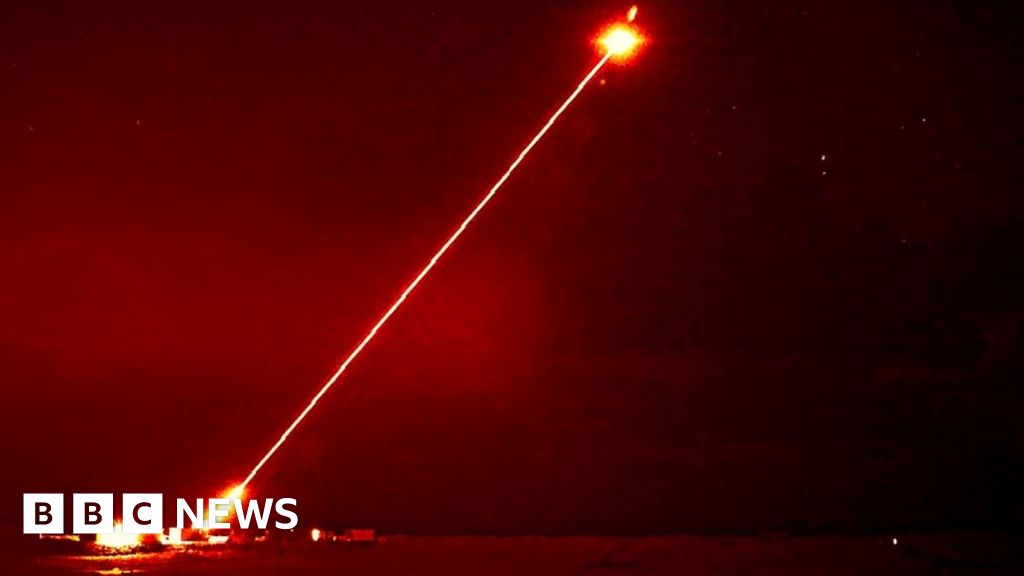The UK has successfully fired a high-power laser weapon against an aerial target for the first time in a trial.
It is hoped that the test will pave the way for a low-cost alternative to missiles to shoot down targets like drones.
The DragonFire weapon is precise enough to hit a £1 coin from a kilometre away, the Ministry of Defence (MoD) says.



Having such lasers stationary is one thing, but having them mobile another. You need a lot of stored energy to fire those things. And the tracking is probably the hardest task, at least for small or very fast objects, because you need to be so much more accurate compared to autocannons with programmable ammunition.
The US already has them. They’re called DE M-SHORAD and they’re mounted on Strykers.
Yes, like the Skyranger 30 HEL, which can be mounted on a Boxer or Lynx KF41, but those are still meant for flimsy aerial targets, not an armored laser turret within a heavily protected compound.
Wait, what? The comment I replied to insinuated that a mobile 50KW system wasn’t possible so I linked you to one that the US already has. You then linked me to the Skyranger which has a LESS powerful laser than DE M-SHORAD and brought up “armored laser turrets within a heavily protected compound.”
I am now confused as to your point.
Quite the opposite. Lasers don’t need to be “led” when shooting, they’re as fast as light. Putting the targeting reticle over the bogey and firing should guarantee a hit without possibility of evasion.
No, not the opposite. Yes, you don’t have to lead the target, but you also have to remain dead accurate onto the target for a prolonged time for the laser to accumulate. They aren’t some video game instagib weapon but heat the target up over several seconds of prolonged exposure to the beam. This means you have to be able to accurately track them, even tiny targets such as drones. Leading the target isn’t really much of an issue at those ranges and with programmable munitions. Tracking those movements is in fact easier because you don’t need that pin point accuracy when you saturate the flight path with thousands of tiny bits of submunitions.
Yes programmable munitions may currently be able to do the job more reliably, especially in adverse weather conditions, but they’re also vastly more expensive. The cheapest option is a CWIZ but even that thing costs something like $40,000 a minute to fire and using missiles can cost up to $1,000,000 each or more. The laser costs maybe $5 each time you fire it.
Economically its a no brainer to use a laser system when possible.
You would against a drone swarm, especially if each drone is more than a meter or two away from the next one.
I will say that my memory was bad and so my cost was wrong. A CWIZ has a rate of fire of about 3,000 rounds a minute with each round costing something like $30. So the firing cost per minute is $90,000!
Back to your point; engaging a single target will use about 100 rounds for a cost of $3,000. So if for a modest swarm of 10 drones dispersed such that each has to be targeted individually the total cost would be around $30,000. Contrast that with a HEL system where the total cost would be around $50.
Even if you could upgrade the CWIZ to “one shot one kill” levels of accuracy it would still cost $30 per drone so our little swarm would cost $300 to deal with.
I love the CWIZ but the economics are entirely in favor of HEL systems.
At the same time, you don’t have to worry about the travel time of the projectile because it’s instant you also don’t have to worry about things like air, causing a projectile to drift because there is no projectile. All you need is direct line of sight.